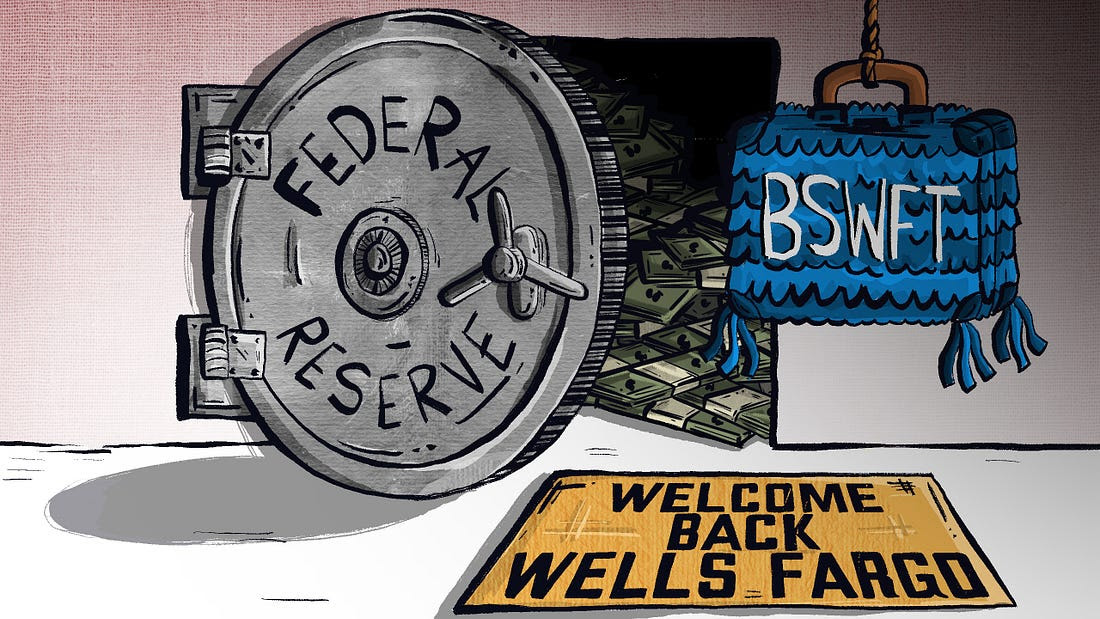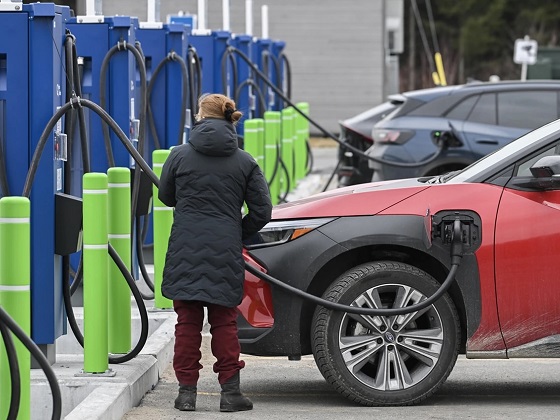Business
Federal government should tackle Canada’s productivity crisis in upcoming budget

From the Fraser Institute
In late-2014, per-person gross domestic product (GDP), a common indicator of living standards, stood at $58,162 (adjusted for inflation). By the end of 2023 it was actually slightly lower. This means Canadian living standards haven’t increased in a decade.
In a recent speech, the Bank of Canada’s senior deputy governor highlighted the risk posed by chronically sluggish productivity growth to the country’s living standards. She also noted that stalled productivity makes it harder to reduce inflation and keep it at (or close to) the Bank’s 2 per cent target.
Productivity is conventionally defined as the value of economic output per hour of work. Over time, it’s the most important determinant of overall economic growth. In a mainly market-based economy such as Canada’s, particular attention should be paid to the productivity performance of the business sector.
Unfortunately, here the news isn’t good.
Business sector productivity has flatlined in Canada, with the level of output per hour worked essentially unchanged from seven years ago. This pattern of productivity stagnation, in turn, is the principal reason why the value of economic output per person has stalled in Canada. In late-2014, per-person gross domestic product (GDP), a common indicator of living standards, stood at $58,162 (adjusted for inflation). By the end of 2023 it was actually slightly lower. This means Canadian living standards haven’t increased in a decade. That’s not a picture any Canadian citizen or policymaker should be happy about.
For many people, GDP is an abstract concept that doesn’t easily map to their lived experience. But the level and rate of growth of GDP clearly matter to the wellbeing of citizens. Academic studies confirm that worker wages are based in part on the productivity level of their employers. Put simply, the most productive businesses generally pay higher wages, salaries and benefits.
Moreover, over time individual and household incomes can only grow if the economy itself generates more output per hour of work and per person. When per-person GDP increases by 2 per cent a year (after inflation), average income doubles within 35 years. With 1 per cent annual growth in per-person GDP, it takes 70 years. At 0.5 per cent growth in per-person GDP, 139 years must pass before the average income will double. In Canada, per-person GDP has been declining outright, an alarming and unusual trend.
Addressing Canada’s productivity crisis should be job one for the federal government’s 2024 budget, which the Trudeau government will table on April 16. In the early 1980s, Canada was roughly 88 per cent as productive as the United States, measured by the value of output per hour of work across the economy. By 2022, that figure had dropped to 71 per cent, and it’s continued to decline since then.
What can be done? So far, the Trudeau government has relied on population growth fuelled by high levels of immigration to drive economic growth. That strategy has manifestly failed, as the government itself recently (if sheepishly) acknowledged by dialing back the numbers of non-permanent immigrants who will be admitted to the country.
A smarter approach is to boost investment in the things that make businesses and workers more productive—machinery, equipment, digital tools and technologies, intellectual property, up-to-date transportation and communications infrastructure, and research and development focused on bringing innovative products and ideas to market, rather than keeping them in the lab or in academic institutions. Canada’s record is poor in most of these areas, as evidenced by the fact we trail far behind the U.S. and many European countries in the level of business investment per employee.
That will need to change if we hope to up our game on productivity and lay the foundations for a more prosperous Canada.
Author:
Banks
Welcome Back, Wells Fargo!

 Racket News
Racket News
By Eric Salzman
The heavyweight champion of financial crime gets seemingly its millionth chance to show it’s reformed
The past two decades have been tough ones for Wells Fargo and the many victims of its sprawling crime wave. While the banking industry is full of scammers, Wells took turning time honored street-hustles into multi-billion dollar white-collar hustles to a new level.
The Federal Reserve announced last month that Wells Fargo is no longer subject to the asset growth restriction the Fed finally enforced in 2018 after multiple scandals. This was a major enforcement action that prohibited Wells from growing existing loan portfolios, purchasing other bank branches or entering into any new activities that would result in their asset base growing.
Upon hearing the news that Wells was being released from the Fed’s penalty box, my mind turned to this pivotal moment in the classic movie “Slapshot.”
Here are some of Wells Fargo’s lowlights both before and after the Fed’s enforcement action:
- December 2022: Wells Fargo paid more than $2 billion to consumers and $1.7 billion in civil penalties after the Consumer Financial Protection Bureau (CFPB) found mismanagement — including illegal fees and interest charges — in several of its biggest product lines, such as auto loans, mortgages, and deposit accounts.
- September 2021: Wells Fargo paid $72.6 million to the Justice Department for overcharging foreign exchange customers from 2010-2017.
- February 2020: Wells Fargo paid $3 billion to settle criminal and civil investigations by the Justice Department and SEC into its aggressive sales practices between 2002 and 2016. About $500 million was eventually distributed to investors.
- January 2020: The Office of the Comptroller of the Currency (OCC) banned two senior executives, former CEO John Stumpf and ex-Head of Community Bank Carrie Tolstedt, from the banking industry. Stumpf and Tolstedt also incurred civil penalties of $17.5 million and $17 million.
- August 2018: The Justice Department levied a $2.09 billion fine on Wells Fargo for its actions during the subprime mortgage crisis, particularly its mortgage lending practices between 2005 and 2007.
- April 2018: Federal regulators at the CFPB and OCC examined Wells’ auto loan insurance and mortgage lending practices and ordered the bank to pay $1 billion in damages.
- February 2018: The aforementioned Fed enforcement action. In addition to the asset growth restriction, Wells was ordered to replace three directors.
- October 2017: Wells Fargo admitted wrongdoing after 110,000 clients were fined for missing a mortgage payment deadline — delays for which the bank was ultimately deemed at fault.
- July 2017: As many as 570,000 Wells Fargo customers were wrongly charged for auto insurance on car loans after the bank failed to verify whether those customers already had existing insurance. As a result, up to 20,000 customers may have defaulted on car loans.
- September 2016: Wells Fargo acknowledged its employees had created 1.5 million deposit accounts and 565,000 credit card accounts between 2002 and 2016 that “may not have been authorized by consumers,” according to CFPB. As a result, the lender was forced to pay $185 million in damages to the CFPB, OCC, and City and County of Los Angeles.
Additionally, somehow in 2023 Wells even managed to drop $1 billion in a civil settlement with shareholders for overstating their progress in complying with their 2018 agreement with the Fed to clean themselves up!
I imagine if Wells were in any other business, it wouldn’t be allowed to continue. But Wells is part of the “Too Big to Fail” club. Taking away its federal banking charter would be too disruptive for the financial markets, so instead they got what ended up being a seven-year growth ban. Not exactly rough justice.
While not the biggest settlement, my favorite Wells scam was the 2021 settlement of the seven-year pilfering operation, ripping off corporate customers’ foreign exchange transactions.
Like many banks, Wells Fargo offers its corporate clients with global operations foreign exchange (FX) services. For example, if a company is based in the U.S. but has extensive dealings in Canada, it may receive payments in Canadian dollars (CAD) that need to be exchanged for U.S. dollars (USD) and vice versa. Wells, like many banks, has foreign exchange specialists who do these conversions. Ideally, the banks optimize their clients’ revenue and decrease risk, in return for a markup fee, or “spread.”
There’s a lot of trust involved with this activity as the corporate customers generally have little idea where FX is trading minute by minute, nor do they know what time of day the actual orders for FX transactions — commonly called “BSwifts” — come in. For an unscrupulous bank, it’s a license to steal, which is exactly what Wells did.
According to the complaint, Wells regularly marked up transactions at higher spreads than what was agreed upon. This was just one of the variety of naughty schemes Wells used to clobber their customers. My two favorites were “The Big Figure Trick” and the “BSwift Pinata.”
The Big Figure Trick
Let’s say a client needs to sell USD for CAD, and that the $1 USD is worth $1.32 CAD. In banking parlance, the 32 cents is called the “Big Figure.” Wells would buy the CAD at $1.32 for $1 USD and then transpose the actual exchange rate on the customer statement from $1.32 to $1.23. If the customer didn’t notice, Wells would pocket the difference. On a transaction where the client is buying 5 million CAD with USD, the ill-gotten gain for Wells would be about $277,000 USD!
Conversely, if the customer did notice the difference, Wells would just blame it on the grunts in its operational back office, saying they accidentally transposed the number and “correct” the transaction. From the complaint, here is some give and take between two Wells FX specialists:
“You can play the transposition error game if you get called out.” Another FX sales specialist noted to a colleague about a previous transaction that a customer “didn’t flinch at the big fig the other day. Want to take a bit more?”
The BSwift Piñata
The way this hustle would work is, let’s say the Wells corporate customer was receiving payment from one of their Canadian clients. The Canadian client’s bank would send a BSwift message to Wells. The Wells client was in the dark about the U.S. dollar-Canadian dollar exchange rate because it had no idea what time of day the message arrived. Wells took advantage of that by purchasing U.S. dollars for Canadian dollars first. For simplicity, think of the U.S. dollar-Canadian dollar exchange rate as a widget that Wells bought for $1. If the widget increased in value, say to $1.10 during the day, Wells would sell the widget they purchased for $1 to the client for $1.10 and pocket 10 cents. If the price of the widget Wells bought for $1 fell to 95 cents, Wells would just give up their $1 purchase to the client, plus whatever markup they agreed to.
Heads, Wells wins. Tails, client loses.
The complaint notes that a Wells FX specialist wrote that he:
“Bumped spreads up a pinch,” that “these clients who are in the mode of just processing wires will most likely not notice this slight change in pricing” and that it “could have a very quick positive impact on revenue without a lot of risk.”
Talk about a boiler room operation. Personally, I think calling what you are doing to a client a “piñata” should have easily put Wells in the Fed’s penalty box another 5 years at least!
Wells has been released from the Fed’s 2018 enforcement order. I would like to think they have learned their lesson and are reformed, but I would lay good odds against it. A leopard can’t change its spots.
Racket News is a reader-supported publication.
Consider becoming a free or paid subscriber.
Alberta
Pierre Poilievre – Per Capita, Hardisty, Alberta Is the Most Important Little Town In Canada

From Pierre Poilievre
-

 Business2 days ago
Business2 days agoElon Musk slams Trump’s ‘Big Beautiful Bill,’ calls for new political party
-

 Business2 days ago
Business2 days agoRFK Jr. says Hep B vaccine is linked to 1,135% higher autism rate
-

 International1 day ago
International1 day agoCBS settles with Trump over doctored 60 Minutes Harris interview
-

 Business20 hours ago
Business20 hours agoWhy it’s time to repeal the oil tanker ban on B.C.’s north coast
-

 MxM News20 hours ago
MxM News20 hours agoUPenn strips Lia Thomas of women’s swimming titles after Title IX investigation
-

 Crime17 hours ago
Crime17 hours agoBryan Kohberger avoids death penalty in brutal killing of four Idaho students
-

 Censorship Industrial Complex2 days ago
Censorship Industrial Complex2 days agoGlobal media alliance colluded with foreign nations to crush free speech in America: House report
-

 Business20 hours ago
Business20 hours agoLatest shakedown attempt by Canada Post underscores need for privatization








